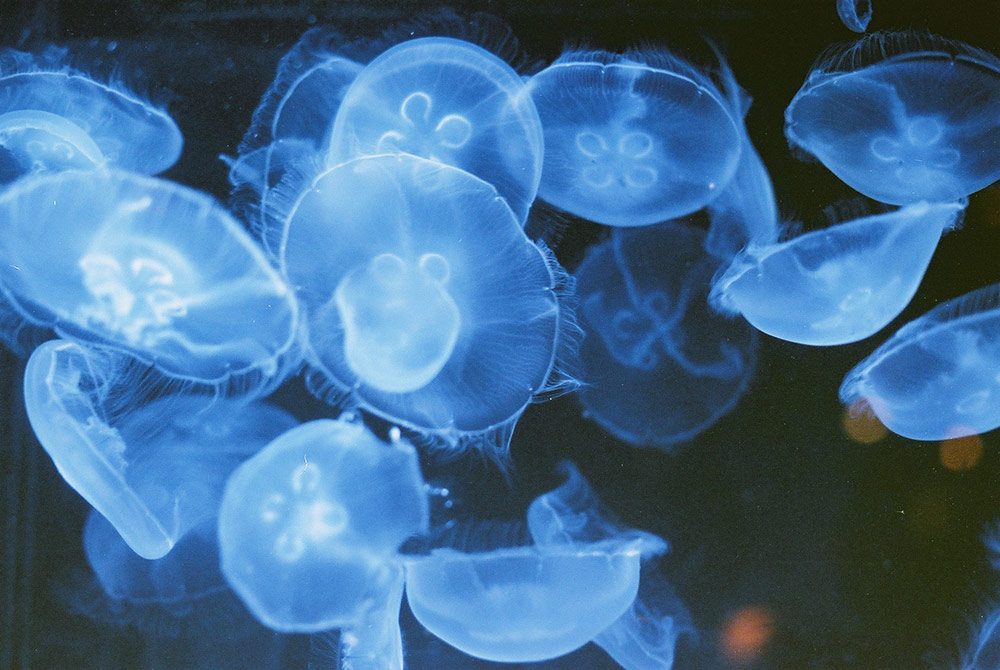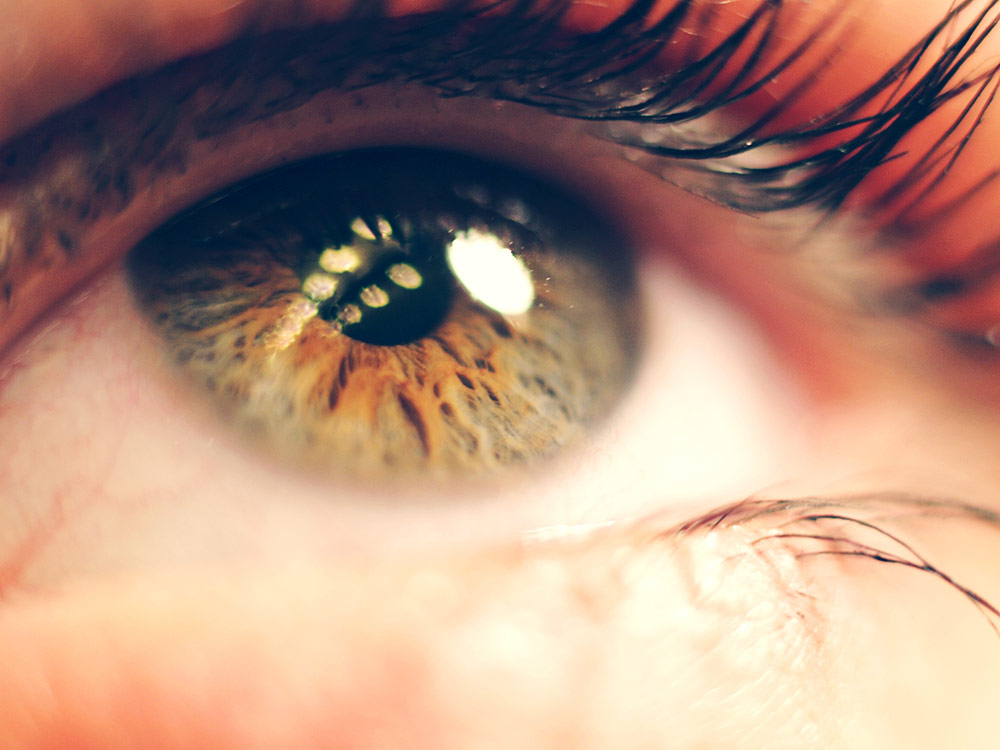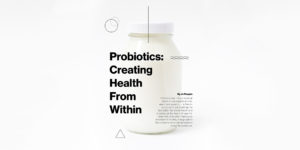Cellular Memory Healing:
How to Clear Limiting Beliefs and Emotional Wounds at the Cellular Level
BY DR. ALEXANDER LLOYD
 researchers have found that memories are stored in cells as well as the brain. photo: angus
researchers have found that memories are stored in cells as well as the brain. photo: angus
It’s usually pretty easy to know when something’s not working in our lives; the symptoms of pain or anxiety are hard to miss. Cellular memory, however, is easy to overlook. You might have a toothache, or be up late at night worrying over your teenage son’s
whereabouts. What’s not so easy is discovering the true source of those problems, and actually healing the source rather than simply managing its symptoms. We have a natural tendency to think the problem is our current circumstance, but this is often inaccurate. If we invest our energy in changing our circumstances as the source of our problems when our circumstances are not the source of the problem, we simply create more stress!Over the last 50 years and especially the last 15, experts have verified that the source of your symptoms of pain and anxiety is usually not located in your body or even in your environment. The source is located in the unseen issues of your unconscious and subconscious mind, or what science calls “cellular memory.”
So what exactly do we mean when we say “cellular memories”? Really, we are simply talking about your memories. Researchers began adding the word cellular because we used to believe that all memories were stored in the brain—until, over many years with lots of patients, surgeons removed every part of the brain and found the memories were always still there. The experiences of organ transplant recipients also support this idea. Now we know that memories are stored in cells all over the body, but they’re still just what we would call our “memories,” which is how I’ll refer to them throughout the rest of this. Also, out of the various terms writers and researchers have used for cellular memory, I’ve come to prefer the term that King Solomon used, particularly since he was the earliest source I found for this concept: the issues of the heart. But to distinguish this concept from our cardiovascular heart, I call it the “spiritual heart.” So when I refer to the spiritual heart throughout the rest of the piece, you can just as easily substitute cellular memory or the subconscious or unconscious mind. I simply mean the place where our good and bad memories, the source of all our life issues and problems, reside.
On September 12, 2004, the Dallas Morning News ran a story, “Medical School Breakthrough,” about a new research study that had just been completed at Southwestern University Medical Center in Dallas, Texas. Scientists had discovered that our experiences do not just reside in our brains but are recorded at the cellular level throughout our bodies, and they believed these cellular memories were the true source of illness and disease. They interviewed Eric Nestler, an M.D. from Harvard, who said, “Scientists believe these cellular memories might mean the difference between a healthy life and death… Cancer can be the result of a bad cellular memory replacing a good one… This may provide one of the most powerful ways of curing illness.”
This article was reprinted all over the world. If you read the fine print about what Southwestern is calling cellular memory, and what Solomon is calling the issues of the heart, they are talking about the same thing.
In October 2004, the Dallas Morning News ran a follow-up article to the one cited earlier: “A Cell Forgets.” It’s a long excerpt, but worth seeing at length:
Throughout the natural world, scientists are finding, cells and organisms record their experiences, all without the benefit of a brain. Scientists believe these cellular memory might mean the difference between a healthy life and death.
Cancer can be a result of bad cellular memory replacing good ones. Psychological trauma, addiction and depression may all be furthered by abnormal memories inside cells. Diseases that turn up later in life, scientists suspect, may be due to errant memories programmed into cells as people age. Even real memory, the kind that requires a brain, also seems to rely on memories locked in cells.
Now scientists are striving to understand how cells acquire these memories and perhaps treat disease at its roots by adjusting them.
“This may provide one of the most powerful ways of curing illness,” said Dr. Eric Nestler, chairman of the psychiatry department at the University of Texas Southwestern Medical Center at Dallas.
For many diseases, he says, treatments today aren’t much better than Band-Aids. They address a disease’s symptoms, but not its cause. “Harnessing this knowledge,” Nestler said, “offers the potential of really correcting the abnormality.”
The article goes on to explain that Dr. Nestler and other cellular biologists, such as Dr. Susan Lindquist and Nobel laureate Dr. Eric Kandel, have discovered specific chemical markers on our cells that seem to signal whether to use a certain gene or not. In fact, Dr. Nestler published research in the Journal of Neuroscience that shows how electric shocks can change the markers on brain genes in mice.However, research has revealed that something else besides electric shock can change these markers of cellular memory: a mother’s love. Through lab experiments with rats, the researchers found that a mother rat licking her pups literally changes the chemical markers attached to the gene that governs their experience of fear, resulting in the pups displaying less fear throughout their lifetime and indicating that a mother’s love can “program their brains for life.”
In other words, these researchers have verified that love is an antidote to fear, and both love and fear can be measured on the cellular memory level. They are also discovering that outside influences can “brainwash” an otherwise “peaceful cell” to become an invasive cancer cell, and you can see that in these markers as well. “The peaceful cell is reprogrammed [emphasis mine] with strategically placed gene markers that cause it to grow out of control.”
 clearing and healing memories requires that we use techniques that work on a bioenergetic, cellular level. photo: han.lei photocase.com
clearing and healing memories requires that we use techniques that work on a bioenergetic, cellular level. photo: han.lei photocase.com
This research is from 2004. Today scientists are still putting their best efforts into studying the specific markers of cellular memory and understanding how to manipulate them in the laboratory. In fact, you may have already heard about the power of cellular memory through the stories of organ transplant patients. One famous example is Claire Sylvia, who wrote about her experience in the book A Change of Heart. After her heart and lung transplant at Yale–New Haven Hospital in 1988, she noticed significant personality changes: she experienced strong cravings for Kentucky Fried Chicken, which as a health-conscious dancer and choreographer she would have never eaten before; she suddenly liked blues and greens rather than the bright reds and oranges she typically wore; and she became aggressive in her behavior, which was even more out of character. After some investigation, she discovered that all these new personality traits were characteristic of her donor. Dozens of similar experiences by other organ transplant donors have been reported as well. The explanation is cellular memory.
As a research scientist at the University of Wisconsin, Dr. Bruce Lipton was cloning human muscle cells, trying to determine why they atrophied. He discovered that individual muscle cells react and change based on their “perception” of their environment, not necessarily the “actual” environment. Further research led him to discover that the same is true for human beings as a whole: we react and change based on our perceptions of our environment (not our environment as it really is). Another word for these perceptions are our beliefs. Dr. Lipton says that virtually every health problem originates from a wrong belief in the subconscious mind. After reading the fine print in their supporting research, I believe what Dr. Lipton calls the beliefs of the subconscious mind are exactly what Dr. Nestler and his colleagues call cellular memory, and what Solomon called the spiritual heart. Because the subconscious mind is literally one million times more powerful than the conscious mind, the odds of having the life you want without changing those beliefs is a million-to-one shot.
The phenomenon of cellular memory applies to every person on the planet, not just the sick or underachieving. Our cellular memories (or subconscious beliefs, or issues in your spiritual heart) will catch up with you sooner or later. Like a virus on your computer, you can’t just ignore them and hope they’ll miraculously disappear; it simply won’t happen.Dr. John Sarno of the NYU School of Medicine has done groundbreaking work in psychosomatic illnesses and the mind-body connection, specifically with back pain. Dr. Sarno agrees with Dr. Lipton and Dr. Nestler and says that adult chronic pain and illness originate from destructive, unhealed cellular memories. Through cellular healing of the memory, the chronic pain and illness go away.
In fact, holistic practitioner Dr. Andrew Weil says in his bestselling book Health and Healing, “All illness is psychosomatic.” He doesn’t mean it’s not real (and neither does Dr. Sarno); he means it does not originate from a physical source—thus also agreeing with the aforementioned experts.
Dr. Doris Rapp, a world-renowned pediatric allergist, is a dear friend of mine and one of my heroes. Many years ago Dr. Rapp was willing to go outside the box of standard medicine in order to help children through an effect similar to cellular memory healing. She has taken criticism from her peers for doing so but has stayed the course. Today, there are thousands and thousands of people around the world who point to Dr. Rapp as their turning point, and she has received a list of humanitarian honors as long as your arm.
In her bestselling book Is This Your Child? she talks about a cellular memory principle called the “barrel effect.” In fact, her book was the first place I’d ever seen it discussed, and it made a big impact on me many years ago. According to the barrel effect, we can think of all the stress in our life as being in one big internal barrel. As long as the barrel is not full, our body can deal with new stress. Somebody might get angry at us, something might not go our way, or we might be exposed to a toxin, and we would still feel okay; our body and mind can deal with it. Once our barrel is full, however, the tiniest little thing will get us. So the straw that broke the camel’s back is fairly scientifically accurate.
For example, let’s say yesterday you ate some peanuts, and you felt fine. But today you eat one peanut and have an allergic reaction. Without understanding cellular memory, it makes absolutely no sense—it can’t be the peanuts, right? You ate some yesterday, and you were fine. What’s different about today? The truth is, it was the peanuts, and it wasn’t the peanuts. Yes, eating that peanut triggered a negative physical reaction. But the peanut would not have triggered the reaction if your stress barrel had not been full. The real cause was not the peanut, it was the stress (or more accurately, the internal “source” of the stress). Your stress level was the only differentiating factor.This cellular memory theory proves true both physically and non-physically. If you’re a parent, you’ve probably seen it with your kids. When you tell your two-year-old it’s time to go home from the playground, on Wednesday he might trot along obediently. But on Sunday, when you tell him the same thing, at the same time of day, and at the same park, he may go ballistic and shoot off a geyser of adrenaline in the worst temper tantrum he’s ever had. His reaction each time depended on how full his stress barrel was. Once his stress barrel was overflowing, his unconscious treats having to leave the playground as a life-threatening emergency. (Externally, it simply appears as if he overreacted.) You can see from this that we are not designed to live life with a full stress barrel. Living out of balance in this way leads us to “malfunction” physically and non-physically.
But the number one job of our stress response is to protect us, not to make us happy. Whether physically or non-physically, our stress response would much rather overreact than underreact, and it will often set off the fight-or-flight reaction “just in case.” If it underreacts, we could be dead, and it will have failed at its most important job. Also, the amount of adrenaline released at the time of the event, based on how stressful the situation feels in the moment, determines the strength of that memory in our spiritual heart throughout our lives. Our mind will always prioritize experiences that it believes will keep us safe and out of danger, and it determines this based on our cellular memory—specifically, fear-based memories. You can see why all of us have unhelpful programming in our spiritual hearts—a stressful memory wreaking havoc in our life right now might be because we had a bad day at the park when we were two!
Our stress barrel even includes generational memories. You could have had an idyllic childhood and a trauma-free life, but for some reason still have significant confidence issues, depression issues, health issues, or addictions. I’ve worked with many people who fit into that category, who later learn that a significant trauma occurred generations back—for example, a child was hit by a train and died—and no one in the family was ever the same again. These cellular memories, which are powerful human hard-drive viruses, are passed down like DNA. The more adrenaline released when the event happens, the stronger the cellular memory is, the more it affects you, and the more likely it is to be passed onto future generations. So the memories affecting you may not even be yours. Generational memories can explain the existence of what we started calling “the cycle” and “breaking the cycle” a few decades back, or the behavior, thought, and feeling patterns that keep repeating in certain families. If you can remove the stress from the person who has the problem now (even if it is genetic and many generations removed from the origin), even the genetic problem will usually heal.
One of my clients finally figured out that the source of her current symptoms went back over a hundred years. After doing some poking around in her family history, she discovered that during the Civil War, her great-great-grandmother witnessed her husband and three sons killed by the enemy in their home and her entire house was burned to the ground. We can only imagine how the cellular memory of that event affected that woman’s stress, her health, and the circumstances of her whole life. She passed those stress memories (and their symptoms) down to her descendants, even those so far removed from the situation that they didn’t even know about it—including my client. But such stresses don’t mean there is no hope of healing them. Once we identified this memory from past generations, we could address the source of my client’s problems, and she was able to heal.
If you compare the details of the research of all the experts mentioned above, they say the same thing: the source of every problem can be linked to our subconscious mind, otherwise known as our cellular memories, or spiritual heart. The trigger is something in our current circumstances related to the past memory, and the symptom is the stress response.
How Cellular Memory Causes the Negative Symptoms in Our Lives
Here’s what all this really means. Your body is made up of 7,000,000,000,000,000,000,000,000,000 (7 octillion) atoms. Every single one of those atoms is influenced by your thoughts. Every time you have a new thought, you are creating new connections or neural pathways in your brain. When you have the same thoughts or emotions automatically triggered by a certain event, this emotion or thought comes from a neural network that was wired when you experienced an event for the first time. These neural networks are your cellular memory. Every time you experience a similar event, the same memory is triggered, and you are usually not consciously aware where it comes from or why you feel that way.
The challenge is that most of your responses happen on autopilot, based on these memories of previous experiences. If you grew up with great role models and an empowering life, then you may be one of the lucky ones who have a pretty great life today. But if you had traumas in your past that you haven’t yet healed, whether in your own life or the lives of your predecessors, then your life is likely to be filled with similar experiences that keep coming up again and again based on your cellular memory.
Your cellular memory is the reference points your brain uses to decide how to respond in the here and now. It’s the reason so many of us role-play our parents in our relationships as adults, for better or for worse—even when we know better and try our best not to act that way.
So if you have a cellular memory with anger in it, or fear, or low self-esteem, or hundreds of other similarly negative feelings, that memory can make you sick, lead to failure, and destroy your most important relationships. When you encounter any situation in your life, you may think you’re approaching this situation completely anew as a rational logical adult, and making new conscious decisions about how you’re going to react in the present moment. In actuality, your spiritual heart is searching for a memory that best matches the sensory input it’s receiving. According to research, our sensory perception (a sight, smell, feeling, etc.) is gone after one second. So however we respond after one second has nothing to do with our senses, it has to do with our memory banks. “We don’t see things as they are. We see them as we are.” Recall the example we used earlier about two people side by side in rush-hour traffic. One goes into road rage; the other is cool as a cucumber. They are in the exact same external circumstance. The difference can’t be the circumstance. It has to be something internal, and it is.
If your spiritual heart finds a happy cellular memory, you tend to react positively. If it finds a painful memory, you tend to react in fear or anger. That fear-based memory will produce negative symptoms in your physiology, thoughts, beliefs, emotions, and behaviors. A memory functions a lot like a cell phone, broadcasting and receiving constantly. That cellular memory broadcasts a “fear signal” to surrounding cells, as well as to the hypothalamus in your brain, which governs the stress response. When the cells receive that signal, they close and go into death and disease mode; they don’t eliminate toxins or take in needed oxygen, nutrition, hydration, and ions. If the cell remains in this closed state long enough, the odds skyrocket that it will unmask a disease gene. In fact, Dr. Bruce Lipton says that this is the only way you can have a disease manifest in your life. If this doesn’t happen, you literally can’t get sick, because your immune and healing systems will always be working at optimum levels.
When the hypothalamus receives the fear signal from the cellular memory, it turns on the stress response. Bingo—that’s where every problem begins. Our fight-or-flight reaction is triggered, our hypothalamus floods our body with stress hormones such as cortisol, and we shift into pain/pleasure programming so that we must seek relief from this pain or fear at all costs. Now we want to either run from that thing or destroy it. Our brain has disconnected or turned down our rational conscious thinking except to rationalize fight or flight. That stress makes us sick, tired, dumb, negative, and a failure—producing virtually every kind of negative symptom possible. See the connection?
This concept has very important implications for the role of our conscious mind in decision-making and action. Dr. William Tiller told me about conscious and unconscious intention: “If they conflict, the unconscious wins every time.” When we act on something, one second before we consciously decide to do it, there’s a chemical spike in the brain, mandating what our decision will be and already mobilizing the body to do that action—all just a second before our conscious mind decides what we’re going to do. So our conscious choice is actually mandated by our programming if we have a fear cellular memory related to the situation (which you are frequently unaware of): we’re only coming up with a logical explanation for what our unconscious/subconscious has already decided. National Geographic refers to this as “the illusion of intention.”
You’ve seen many examples of it in your own life. In America, some farmer families have driven nothing but a Chevy for generations (“It’s a family thing—we drive Chevys.”) Even if Chevy is ranked number 47 in quality, drivers in these families will come up with every possible rationalization or explanation why there’s a conspiracy at work here and why Chevy should be ranked number one, but somehow isn’t. Of course, these arguments aren’t based on the true quality of the vehicle, but on the programming they’ve received from their parents and grandparents, and their surroundings. If Chevy is number one, then their conscious and unconscious mind are in harmony. If not, they’re wondering why people are writing all these lies about Chevy, and they’re constantly in stress—which, as seemingly unimportant as the surface issue sounds, is still adding to their stress barrel and possibly causing a variety of symptoms in their lives they can’t find the cause for. Why do they keep doing this? Why can’t they see what they are doing and just start believing the truth? Because their unconscious is “mandating” that they buy Chevy, and the conscious mind has an innate “need” to make sense of circumstances and why you think, feel, believe, and do what you do. So they do what they are “compelled” to do by cellular memory, not knowing why, and rationalize why, because they don’t really know.
A more serious example would be our religious upbringing. As for me, I was raised in very strict religious household, which resulted in something like a schizophrenic conflict inside me: I was taught that God is love, but that he was also just waiting for me to put a toe out of line to smack me down. As a young adult I threw this concept of God overboard because it made no sense to me. Or at least my conscious mind threw it overboard, because it was causing me so much pain. It literally took decades for my spiritual heart to follow. But starting at that moment, I went on a search. Over time my cellular memories healed and changed, and today, I have chosen not to be part of any religion (i.e., regularly visiting a certain building by a certain name and with a certain set of rules to follow to be a “good member”). I have found good and bad in all of them.
However, in no way do I intend to imply that I think less of, or look down on, people who believe and live religion. I don’t. I am simply relaying my own beliefs and my own path. Today, I consider myself to be a follower of Jesus—period—nothing more or less. Jesus taught that if you love, you have done it all; if you don’t live in love, you have missed the mark. I believe my job, with every person and in any and every situation, is to love with no agenda and no strings attached—whether they like me, are nice to me, or the opposite. My job is not to judge, just love. I believe this is “spiritual,” not religious, living.
But here’s my question: What is inside of you? Is it Ford or Chevy? Religious or not? Cowboys or Redskins? Big government or antigovernment? Is there any sense of comparison or competition where whatever you believe in has to come out on top? Or are you continually seeking and open to the whole truth, no matter what? America is one of the richest and blessed nations on the planet. Yet so many Americans are incredibly stressed about finances because they’re comparing their situation to someone else whom they think has it better. Whenever someone comes into my office stressed about finances, I ask them: “Do you have a home? Do you have food on the table? Do you have electricity?” Ruefully they usually answer, “Yes.” They’re typically worried about something that will never happen—and even if they have lost something big, somehow they will still have a roof over their head and food to eat. But the source of their stress is the internal fear from their cellular memory causing them to compare themselves with others, not because their true safety or survival was threatened.
I once saw an online poll that asked, “If you could pull up your home, possessions, and wherever you’re living right now and put it all in the poorest part of Ethiopia, would you feel any different?” The typical reaction has fascinated me. Most people said yes, they would feel differently—but not because they’d feel more content and compassionate. They’d feel anxious because now they’d need to protect their stuff from everyone else who has it so much worse than they do! This kind of unconscious intention is why we have to deprogram and reprogram the cellular memories in our spiritual heart. Otherwise, we’ll be a puppet to subconscious or unconscious issues that not only don’t help or serve us, they might not even be true in the first place.
Let’s see what unconscious intention looks like in action. A man approaches a line of traffic at a red light, and he becomes angry. Anger is a fear-based emotion, so if he is experiencing fear in a situation that is not life-threatening, this is a sign that he has a human hard-drive virus, which simply means something in his survival mechanism is malfunctioning. That is to say, he has cellular memories in his spiritual heart (or subconscious mind) that are telling him this is a life-threatening situation, whether it’s from his upbringing, past experience, or even generational experience he may or may not know about. Let’s also say he’s read the introduction to my book, so his conscious mind knows what he’s supposed to do: sit in his car patiently and love the driver in front of him. Good luck with that, right?
You can already see the problem: that conscious insight doesn’t stand a chance. When his brain and body chemistry are telling him to fight, the last thing he wants to do, or can do, is sit in love. That’s the last thing any of us would want to do! Few are capable of resisting our pain/pleasure programming when our bodies are in an active state of fight or flight. Willpower just won’t work, because the trigger was pulled before he even realized what was happening. In fact, whatever willpower individuals can muster in fight or flight is usually just enough to get them to the car horn, or whatever they can get their hands on the fastest that will allow them to “blow off steam” or bring them some instant relief from the pain they’re feeling because of this cellular memory. It is usually not enough to get them to do what they believe is right.
There Is No True Healing without the Healing of Your Memories
So there is no true healing without the cellular healing memories—physically or non-physically! If there’s something you don’t like about your current experience, you can take this to the bank: you have cellular memory that contains similar negative experiences, and specific programming for what you are experiencing. In other words, you’re reliving and reproducing your fear-based memories over and over. If you find yourself in any kind of cycle in your life, those memories are the source of the cycle. In fact, everything—your physiology, your thoughts, your beliefs, your emotions, and your behaviors—are all manifestations of your memories and the beliefs that come from them. Your fear-based programming is mandating your current situation.
I hope you’re seeing more clearly now why willpower and most therapy don’t work: they don’t get to the source of the real problem. Even therapies such as conscious desensitization that seem to get at the cellular memory do not usually provide lasting cellular healing. Why? They tend to program our unconscious to repress those memories and thus disconnect our emotional responses from them. This is coping, not true cellular healing. Also, even repressed, these memories fill up our stress barrel. In other words, they effectively place us in a constant state of internal unconscious stress. Even if those memories don’t actively bother you anymore emotionally, they may still be causing more problems than ever in a variety of symptoms you can’t seem to get rid of. Repression plus coping is the opposite of healing. Many people simply end up feeling numb, rather than experiencing the positive results of love, joy, or peace. Repression plus coping still equals stress.
Over the years, many times someone would come to me to deal with a particular problem, but then offhandedly mention another more traumatic incident that happened long ago. They’d believe they had dealt with that incident because they had done therapy for thirty years for it. I would say, “That’s great,” but also know that issue would probably come up again in my work with them. Most likely it had just been repressed, or they had learned coping mechanisms—it hadn’t been healed,
Typical therapy can go on for years and fail to have a lasting impact because it’s either focused completely on the conscious mind (“let’s talk about your mother”) or it’s stumbling around in the depths of your unconscious without a flashlight, and without the proper tools for the job. Instead, we need to target and heal the source, which is the original cellular memory that’s triggering this reaction in the first place. More specifically, we need to identify the human hard-drive virus, deprogram and heal that cellular memory so it no longer sends that fear signal that is turning off our immune system and our best resources, and then reprogram it so that it can operate in truth and love, producing all the positive symptoms our bodies were designed to produce naturally. For that we need concrete tools that are designed, tested, and capable of deprogramming and reprogramming, not just willpower or words.
Healing Cellular Memories
Even though scientists are still learning about how to manipulate the markers on our cells in a laboratory environment, I am happy to tell you that you don’t need to wait for a laboratory breakthrough to deprogram, reprogram and heal your cellular memory. It is possible to do now.
Wait a minute: How can it be possible to heal something that happened in the past—particularly if it didn’t even happen to you, as in generational cellular memory? For the spiritual heart (or subconscious/unconscious mind)—where all the programming for these issues resides—there is no past or future, only the present. Everything is immediate, 360-degree, surround-sound raw experience happening now, in the moment. Even though we think of memories as being in our past, they are very much in our present to the unconscious mind, and we can access them right now.
The first step to healing our cellular memories is to understand the whole truth about the incident that created the memory. Whenever a painful cellular memory is created, we typically simultaneously create an incorrect belief (a lie, or a misinterpretation of the event), and it is actually this incorrect belief, or our interpretation of this event, that causes us to react in fear, not the event itself.
In fact, a cellular memory that triggers fear always goes back to a wrong interpretation of the original event. The true source of my fear and stress is not the fact that Mom died; it’s my belief that because Mom died, I’ll never be okay again. It’s not the diagnosis of cancer; it’s my belief that because I’ve been diagnosed with cancer, my life is over. It’s not the unkind thing someone did to me in and of itself; it’s my belief that this unkind thing means that I am a person of inferior worth and value.
By the way, the original incident may or may not have been what a psychologist (or anyone else) would call traumatic. The incident may have happened during our first six years of life, when we had a temper tantrum for whatever reason, and it was programmed as a trauma. I have had many clients whose success issues go back to these kinds of seemingly minor incidents, and I often call them “Popsicle memories,” after a client who discovered that her success issues went back to when she was five years old and had a tantrum over not receiving a Popsicle.
Whether we would define our past experiences as “traumatic” today makes no difference to our subconscious and unconscious mind. What’s important is to heal the cellular memory and fear signal it’s transmitting. We must identify and remove the lie created from the past painful memory and replace it with the truth. Just like you would pull out a splinter, you can pull out the lie that’s causing your pain and causing you to see the world through dark-colored glasses.
To be clear, when I say “understand the whole truth” about the incident, I mean as much of the truth as we can find—we don’t necessarily need all the historical details about a situation. Even so, most people are unable to search for the whole truth about an event, because fight/flight/shock prevents them from it; it’s simply too painful. In fact, we cannot find most of our cellular memories because they are in our unconscious. Don’t worry, I will show you how to heal these as well. This is yet another reason why willpower won’t work: we need subconscious tools that can go straight to the source and heal it.
How do you know when your cellular memories have been fully healed and that you’ve broken the cycle—without willpower? The next time you’re under external pressure, you feel peace and joy (the by-products of love), rather than anxiety and stress (the by-products of fear).
My wife, Hope, was depressed for a number of years earlier in our marriage. During that time, one day a big package came to the house by UPS. This was back when our sons, Harry and George, were little, and everyone was excited to see what was inside this gigantic box. As it turns out, it was something small, but very fragile, so the box was filled mostly with those Styrofoam peanuts. The day went back to normal until about three hours later, when I heard the most horrible commotion upstairs. I rushed up to see what it was, only to find George crying, Hope furious, and the little white peanuts strewn all over the freshly cleaned house. Needless to say, a trauma situation was created in our home for the next 24 hours or so that would embed itself into cellular memory.
Two years later, after Hope’s depression had been healed, you guessed it: UPS delivered another big box, also full of Styrofoam peanuts. Once again, all was well until about three hours later, when I heard a terrible commotion upstairs again. On the way upstairs to put out the fire, I was experiencing déjà vu from my cellular memory. But when I got to the top of the stairs, I was shocked. I saw my beautiful wife laughing like a ten-year-old schoolgirl, throwing handfuls of peanuts up in the air, pretending they were snowflakes. Harry and George, following suit, were frolicking, rolling, singing, and having the time of their lives. This event also affected our home for the next 24 hours, but in a very different way.
So what in the world happened in those two years that changed Hope’s cellular memory reaction so dramatically? Hope had been reprogrammed through cellular healing. When the first event occurred, Hope was looking at the situation through lenses of pain and fear. Two years later, that programming was gone, which changed how she saw the situation, and now her natural instinct was fun. No one suggested it; there were no “shoulds.” Her natural, immediate response had been completely reversed. That, my friends, is what “breaking the cycle” looks like.
The Energy Medicine Tool: Fixing Source Issues through Cellular Healing
In my experience, the Energy Medicine Tool has the most powerful effect for most people, right off the bat. Because it applies energy to specific points on our physical body to heal a symptom or a problem, it would fit into the category of energy medicine. Energy medicine has been a hot topic in health for at least the last 15 years, very closely related to cellular memory, and we’re learning more every day about its applications. Several mainstream doctors, based on the growing body of scientific evidence, believe that applying our understanding of energy to our health practices may lead to breakthroughs we have never seen before. Donna Eden, author of the classic book Energy Medicine, has documented the resolution of thousands of stubborn problems that medical science simply couldn’t fix. Based on her more than 30 years’ experience healing and teaching around the world, Eden has seen energy medicine resolve terminal bronchitis, revive a flatlined heart attack victim, and reverse severe mental disability, along with witnessing thousands more equally dramatic results.
Only in the last year did I discover that even Sigmund Freud used a technique similar to mine in his psychotherapy. Yes, that Freud—the famous Austrian neurologist and medical doctor who is considered to be the father of psychotherapy, psychiatry, counseling, and therapy. Believe it or not, energy medicine was his go-to intervention when all else would fail. In his own writings, he said, “I can safely say that it has scarcely ever left me in the lurch.” In a way, he was the first to show the world that the non-physical changes the physical. Freud may not have known why it worked, but he knew that the moment he used this technique, his patients’ deeper issues would come up. The Energy Medicine Tool I’ll show you below includes the same position Freud used on his patients (hands over the forehead), although I’ve added two other positions, which I believe make it significantly more powerful, especially when healing cellular memory issues.
Energy medicine is nothing weird, mystical, or even spiritual. It is, in fact, physical (i.e., based in physics). In 1905, Einstein proved that everything boils down to energy (E = mc2). In other words, every cell in your body runs on electrical energy, and every cell has its own energy power plant called the mitochondria. As long as the cell has plenty of positive energy, it’s healthy. If it doesn’t have enough energy, or it is infected with negative energy, it starts to become unhealthy. And we can diagnostically measure the energy level of our cells through CT scans, MRIs, and other similar tests.
Energy medicine is simply trying to infuse positive, healthy energy into cells that have a deficit of this energy or a blockage from bad cellular memory. That’s all it is. Energy medicine in its early forms actually predates Western medicine. Since Albert Einstein’s discovery, Nobel Prize winners have predicted that someday we would figure out how to apply these principles to health effectively and that it would change the landscape of medicine and health, just as energy working through electronics, Wi-Fi, and computers has changed virtually every other technology field in the world since 1905.
The point is that energy medicine in general is not new; it’s just that with an increased understanding of how energy is the source of every problem, only recently has medical science been able to document how powerful it really is, why it can be so effective, and how it now allows us to do things we have not been able to accomplish before.
How the Energy Medicine Tools Work
The principle behind how the Energy Medicine Tool works is quite simple. Everything in the body works on energy: every cell, thought, and feeling. Energy is also constantly pouring out of your body, most of it from your hands. When you place your hands on specific points of your body, you’re putting usable cellular healing energy back into your body. When you put more usable energy into the body, it can do more work, and it can use the extra energy to fix cellular memory problems. Remember that at their root, our issues exist only as internal energy patterns, not as bone, blood, or tissue. Physics 101 says that these energy patterns can be changed by another energy pattern. I believe that’s exactly what Freud did for his patients, and what I have done for mine for the past twenty-five years.
The Energy Medicine Tool uses three positions: the heart, the forehead, and the top of the head. These areas house the physical parts of our body that directly affect (or are affected by) the stress response, as well as the control mechanisms for every cell in the body. You can use the Energy Medicine Tool on yourself, you can use it on someone else, or someone else can use it on you. I have found that results are more powerful if someone else can do it on you, which is what Freud did with his patients and what I have done with my clients.
Position 1: The Heart
In the first position, you place one hand (either left or right), palm down, on your upper chest (over your heart), and place your other hand, also palm down, over the first.
For this position and for the others that follow, you have two options: you can either rest your hands in this position and hold for one to three minutes, which is how Freud used this tool, or you can move your hands gently in a circular motion (clockwise or counterclockwise, whatever is most natural), slowly moving the skin over the bone (not rubbing the skin), switching directions every 15 seconds or so, for one to three minutes. This rubbing option is what I have used with most of my clients, and I’ve found it to be about twice as effective as just holding your hands still, in that it seems to generate results twice as fast. However, if for any reason you are not able to move your hands in a circular motion, the resting position will generate the same results, although it may take longer.
This position pours energy into your cardiovascular system and your thymus, as well as key energy medicine points for your immune system. The thymus is an integral part of our immune system: it governs the release of our hormones and chemicals throughout the glandular system and can be affected both positively and negatively by our cellular memory. In fact, some doctors say that it is your immune system: as the thymus goes, so our immune system goes. Interestingly, it functions at its peak when we’re much younger—particularly at birth and just before puberty. Research is being done right now to see if activating the thymus to higher levels of functioning may heal cancer and many other diseases.
Also housed in the chest is our cardiovascular system, which has an electromagnetic field 50 to 100 times stronger than the brain’s. I believe (as do other doctors) that if we think of the central nervous system (which includes the brain) as the control mechanism for our body, the cardiovascular system is the primary transmitter and receiver: it resonates out the frequencies mandated by the central nervous system. If that’s true, then together the central nervous system, brain, the glandular hormonal system, and the cardiovascular system govern all the control mechanisms in our body, both physical and nonphysical (including mind and spirit)—which are the same areas we’re pouring energy into with the Energy Medicine Tool in order to induce cellular memory healing.
Position 2: The Forehead
In the second position, you place one hand (either left or right) over your forehead, with your little finger just beneath your eyebrows (just barely grazing the bridge of the nose), and your other hand on top of that hand, both with palms down. Again, you can either rest your hands in this position for one to three minutes or, for faster results, move them in a circular motion moving the skin over the bones, switching directions every 10 to 15 seconds, for one to three minutes. You don’t even have to use a circular motion if back and forth is more comfortable, but I have found the circular motion to have the fastest results when trying to improve your cellular memory.
This position is what Freud would use with his patients who struggled with their cellular memory: he would put his hand on the patient’s forehead. This technique works even better when used in conjunction with the heart position described above and the top-of-the-head position described below (which Freud did not do).
As a medical doctor Freud would have known what physical mechanisms were located in this area, but he didn’t know why it would so consistently bring up psychological issues when his other techniques did not. Now, with our understanding of cellular memory, we do.
When you pour energy into the forehead, you’re stimulating some of the most significant physiological mechanisms in your body. First of all, you’re stimulating your entire brain: not only your higher and lower brain, but also your left and right brain. According to Roger Sperry’s split-brain experiments in 1972 (for which he won the Nobel Prize), the right brain includes our limbic system and our reticular formation, which govern wisdom, meaning, feelings, beliefs, action, and images. Our left brain governs words, logic, and rational reasoning only (i.e., not action and not meaning). You’re also pouring energy into the third eye chakra, one of the most powerful energy centers in the body.
Also, based on Sperry’s original research, I personally believe the right brain may be one of the main control center locations of the spiritual heart, which is the “container” for our spirit: our unconscious, subconscious, conscience, and the so-called last frontier—everything else we don’t even know about yet. In the same way, I also believe that the main control center for our soul, in addition to our body, may be the left brain—our conscious mind, will, and emotions. And all that is behind the forehead!
Position 3: Top of the Head
For the third position, place one hand (either left or right) on the top of your head, or your crown, and your other hand on top of that hand, both with palms down. This position not only activates all the same physiological mechanisms of the forehead position (albeit from a different angle), but also the spinal column/vertebrae and the crown chakra, another powerful cellular memory medicine point that many feel governs our connection to the spiritual realm.
Now you see how this physiological tool addresses all three aspects of our being: the physical, mental, and spiritual. When you apply energy to these three areas—the heart, the forehead, and the top of the head—you’re physically increasing blood flow and functionality to the control centers for every cell, every thought, every emotion, and every belief, as well as to your heart, third eye, and crown chakras, the three most powerful cellular memory energy centers in the body. In short, you’re activating and providing more power to the control mechanisms for everything in your life: physical and nonphysical, conscious and unconscious, internal and external, your health, your relationships, your prosperity… everything.
Using the Energy Medicine Tool is like putting gas in the lawnmower, hooking the propane tank to your grill, or giving food and water to a starving person. You’re giving your body the power to do what it needs to do. In its current state, it might be able to function in ordinary ways. But with this tool, it can do the extraordinary—it can heal our cellular memories, thoughts, and feelings, which is what we want, and how our bodies were designed to function in the first place.
I agree with Freud. This tool, especially when using all three positions, has scarcely ever left me in a lurch. It’s the one I’ve relied on most often, and for the longest period of time.
Using the Energy Medicine Tool
You can use the Energy Medicine Tool in two ways. The first is when anything’s bothering you in the moment, such as anxiety, a headache, pain, or any negative emotion. Here’s what to do:
1. First, think about one issue that’s bothering you, and rate your problem at a level between 0 and 10. Even though you may have a list of issues you’d like to address, just focus on one issue at a time, ideally the one that bothers you the most or seems deepest buried in your cellular memory. Perhaps you’d rate this problem at a 7—not the worst you’ve ever had, but clearly significant. (If you have trouble rating things, don’t worry about it. Just determine whether or not it’s bothering you.)
2. Close your eyes and relax. Say a short, simple, sincere prayer from your heart asking for whatever cellular memory is causing your problem to be healed (i.e., the underlying spiritual issues). This prayer needs to be said in truth and love (as opposed to stating what is not currently true, or stating a desire for something that will hurt or disadvantage someone else). Express a true desire for your problem to be healed, rather than stating that it’s already healed, and offer your prayer in love, expressing your desire for a result that helps everyone and has no losers. For example, if you were experiencing anxiety about something you had to do at work, you could say, “I ask for whatever’s causing my anxiety to be completely healed at the source. I ask to be released from this anxiety so I can be freed to be a better worker (a better parent, a better spouse, etc.), and that it will be a win-win-win result for everyone involved.” Instead of anxiety, you could substitute anger or a stomachache or anything else that’s bothering you. Pray from the heart, giving up the end results and willpower, and allowing the process, light, and love to do their work in you.
3. Begin with the first position and place your hands on your heart. Move your hands into position 1 as described above. Now focus on your problem, but don’t try to change it. Simply observe it. Alternatively, you can also relax and focus on positive images that represent love and light to you. Focus on whatever feels best and right. Personally I like to focus on the problem itself and see it begin to melt away. For example, for anxiety, calmly observe the image of anxiety occasionally on your heart screen, and whether you notice any change.
4. Keeping hands stacked, either hold the position or move your hands in a circular motion, lightly moving the skin over the bone clockwise or counterclockwise, switching directions every ten to fifteen seconds, as described above. Remember, adding the circular motion simply accelerates the tool’s effectiveness; if you have a handicap such that you are unable to add the circular motion, or if you get tired, it’s fine to just hold your hands in position. Omitting the circular motion won’t compromise the overall effectiveness of the technique on your cellular memory.
5. Hold this position for one to three minutes. You don’t have to time it exactly, and the length of time you choose is mostly up to you. However, I recommend beginning with one minute, because longer periods can trigger a healing response for some. A cellular memory healing response is a headache or other new, negative symptom experienced during a healing technique, and it’s common for approximately 10 percent of individuals. It simply means you’re trying to do too much at once. If you experience a healing response, simply switch to the next position. If that position also feels uncomfortable, simply stop and let your body catch up. Otherwise, continue relaxing and occasionally observe your symptom (to see if anything is changing) for the duration of this position.
6. When the time is up, switch to the next position: your forehead. Move your hands into position 2, as outlined above. If you choose and are able, move your hands in a circular motion, switching directions every ten to fifteen seconds for as long as it’s comfortable. Just relax the entire time, occasionally observing the problem for change, but remember, just observe it—don’t try to make anything happen. Hold this position for another one to three minutes. Note: you don’t have to switch directions when doing the rubbing—let whatever feels best to you be the rule.
7. When time is up, switch to the final position: the top of your head. Move your hands into position 3, as described above. Follow the same procedure as the two positions above: Move your hands in a circular motion, switching directions every ten to fifteen seconds for as long as it’s comfortable; and observe your problem calmly for one to three minutes.
8. Repeat the cycle of the three positions two to three times per day until you would rate your problem or negative feelings at below a 1 (i.e., it doesn’t bother you anymore). For a single cellular memory healing session, you can repeat the three-position cycle as many times as you like as long as you are not having a healing response, but I would suggest repeating the three positions two to three times in one sitting, or for about ten minutes at a time once or twice a day. A single session may be enough to heal the source of many issues, but some issues can take days, weeks, or even months to fully resolve. If your issue still bothers you after one day, you can use this tool two or three times a day for as many days as it takes to get below a 1 (which means the original problem doesn’t bother you anymore, even in stressful external circumstances).
9. Please do not worry about the timing—however long it takes for you to get below a 1 is the right amount of time for you. What’s important is to do it correctly and consistently.
This article on cellular memory healing is excerpted with permission from The Love Code: The Secret Principle to Achieving Success in Life, Love, and Happiness by Dr. Alexander Loyd.
About The Author
Alexander Loyd, Ph.D., N.D., is the #1 Bestselling author of The Healing Code and the recently released Beyond Willpower. He has been featured live on NBC, ABC, CBS, Fox and PBS News programs as an expert in healing the source issues underlying illness and disease. Dr. Loyd has a Ph.D. in psychology and an N.D. in natural medicine and is a leading expert in the area of alternative medicine. Visit his website: thehealingcodes.com






















